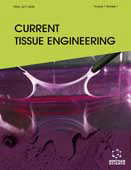Abstract
Purpose: To compare the biosafety of chitosan (CHM) and collagen– vitrigel biomembranes (CVM) when implanted to the anterior chamber of an animal model to set an optimal scaffold for further corneal engineering research.
Methods: Four White New Zealand rabbits, 3 months old, were implanted with CHM in one eye, and other four rabbits were implanted with CVM membranes following cold burn damage on the corneal surface. The contralateral eye was used as the control. After 1 week, rabbits were sacrificed, and the obtained corneas were clinically evaluated and processed for histological analysis.
Results: Eyes implanted with CHM developed severe inflammation with 360° neovascularization, ciliary injection, optical opacity, and purulent exudate in the anterior chamber. Microscopically, CHM-implanted eyes showed severe exudative, inflammatory, and necrotic processes that were mainly composed of polymorphonuclear (PMN) leukocytes, cellular debris, and macrophages. Eyes implanted with CVM showed little or no signs of clinical inflammation. Histological analysis of the CVM and control eyes showed no signs of inflammation, except in places where corneal suture ports and closure with a suture were performed.
Conclusions: CHM are not biocompatible for ocular purposes. CVM are safe to be used for further in vivo research as cell scaffold in corneal engineering.
Keywords: Chitosan, collagen-vitrigel, cornea, corneal endothelium, rabbit, tissue scaffold.
Graphical Abstract
 8
8

